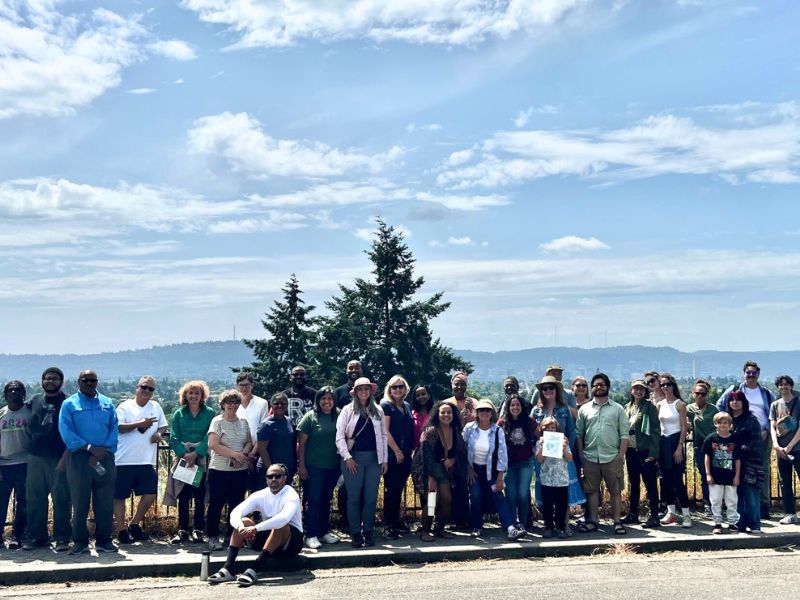Image Copyright: Michal Bednarek / 123RF Stock Photo
Mindfulness practices, which can include yoga, meditation, and breathing exercises, have become increasingly popular in recent years among mental health practitioners, their clients, and the general public. Research shows that engaging in mindfulness can reduce symptoms of depression and anxiety, decrease rates of relapse for substance abuse, and help offer relief from chronic physical pain.[1] Even people who do not experience these conditions may find that mindfulness helps them to focus and to stay in the present moment––in other words, to be more mindful.
So what’s not to love about mindfulness? Unfortunately, many people who have post-traumatic stress disorder, or PTSD, may not reap the same advantages from mindfulness practice as others. The current mindfulness-based treatment methods offered by practitioners may not be effective for clients with PTSD, and often, it’s possible they may even make symptoms worse by “triggering traumatic responses that need further processing.”[2]
Many people cope with trauma by distancing themselves from the sensations in their bodies and minds (the most extreme example of this is dissociation). Therefore, bringing one’s attention deliberately back to the body can unzip trauma symptoms they may not be prepared to address. However, mindfulness meditation can be helpful to those with PTSD and a history of trauma when practiced under the guidance of a mental healthcare provider and modified to be better suited for trauma survivors.
Here are four ways mindfulness meditation can be modified to suit those with PTSD or a history of trauma. These modifications are for educational purposes only and should be practiced under the care of a licensed mental healthcare provider.
How to Use Meditation to Help PTSD
1. Creating a safe space for meditation practice.
Trauma survivors may find it helpful to build a sanctuary in which to practice mindfulness. This can provide feelings of safety and routine, which may help make the practice feel more natural. They may find it helpful to find a room that encourages feelings of ease. It may help to dim the lights enough to bring focus away from external stimuli, but not if it causes unease.
Practitioners can begin to focus on noticing the sounds in the room; neutral music tends to be more relaxing. But remember, we’re all unique, so the music should be suited to the individual. It’s helpful to notice the lighting in the room and notice what feelings come up. The most important thing is to create a space that feels safe so that if one does feel triggered by a mindfulness practice, they’ll be able to bring themselves back to the room and the present moment.[3]
Here is an excellent article from yogi Amy Jirsa on how to create a meditation space of serenity.
2. Trauma-informed meditation.
Meditation involves calming one’s mind and body by clearing unwanted thoughts and focusing on the breath. However, a common symptom of PTSD is a state of hyperarousal or agitation, which can cause (among other things) quick, shallow breathing that stays in the tops of the lungs.
When someone with PTSD struggles to breathe deeply for the sake of meditation, they may experience feelings of failure and decide to stop the exercise completely. Additionally, the internal focus and shutting out of external stimuli encouraged through meditation may make survivors feel unsafe; the hyperarousal that comes with PTSD is a response to the traumatic event, an effort to be aware of one’s surroundings and avoid being harmed again.[4]
Fortunately, there are ways to reduce these pitfalls and make meditation more accessible. The most important things to remember are:
- They should go at their own pace; mindfulness isn’t a race but practice of beginning again and again.
- Breaks are okay, and should be taken when needed.
- It’s okay to stop if they become uncomfortable or triggered.
The eyes can be kept open if it is most comfortable. It’s okay to notice sensations in the body, but one should not feel like they need to focus on them or change them.[5] It can be helpful to explore a guided meditation practice specific to trauma survivors; I recommend Kristina Cizmar’s Trauma Informed Meditation Exercises CD, which are on Amazon and iTunes.[6]
It’s also worth mentioning that trauma-sensitive yoga has gained popularity in recent years, but it may be hard to find online resources for practicing at home; instead, it may be worth it to explore a trauma-informed yoga class in local areas.[7]
3. Art as a vehicle for meditation and mindfulness.
When used under the care of a qualified counselor, art therapy has been proven to reduce the symptoms of PTSD and many other emotional difficulties by allowing artists to express themselves creatively. Art can decrease levels of stress and depression, reduce blood pressure, and provide a sense of meaning and purpose.[8]
It may seem like common sense that participating in an art project could help address anxiety and depression by providing a distraction, but there are tangible benefits.
Through the guidance of their counselor, it can feel empowering for a trauma survivor to share a personal story in a creative way and on their own terms.[9] If they’re not able to participate in formal art therapy, it’s easy to use art as a mindfulness practice at home by painting, drawing, or even using an adult coloring book.[10]
4. Process trauma with mindfulness and a qualified counselor.
This is important, and so it’s worth repeating. Trauma is best processed with the help of a qualified mental health counselor. While the modified mindfulness practices we’ve discussed may be beneficial to those with trauma backgrounds, they cannot replace professional help. Research has shown that cognitive behavioral therapy (CBT) may be the one of the most effective therapies for treating PTSD.[12]
Formal therapy can integrate a mindfulness element, and several types of mindfulness-based treatments have gained popularity among mental health professionals, including acceptance and commitment therapy (ACT) and dialectical behavioral therapy (DBT).[13]
However if trauma survivors choose to use mindfulness to address symptoms of PTSD, it’s helpful to have a trained therapist on their side to assist with in the process.
Want to learn more about how holistic modalities like mediation, yoga, and aromatherapy can support mental health? Explore ACHS’s online course, HED 303 Stress Management and Emotional Health.
References
[1] Vujanovic, A. A., Youngwirth, N. E., Johnson, K. A., & Zvolensky, M. J. (2009). Mindfulness-Based Acceptance and Posttraumatic Stress Symptoms among Trauma-Exposed Adults without Axis I Psychopathology. Journal of Anxiety Disorders, 23(2), 297–303. http://doi.org/10.1016/j.janxdis.2008.08.005
[2] Manotas, Manuel (2015). Mindfulness Meditation and Trauma: Proceed with Caution. Retrieved from http://www.goodtherapy.org/blog/mindfulness-meditation-and-trauma-proceed-with-caution-1021154
[3] Farrell, R.S. (2017). Mindful Teachers: 8 Principles of Trauma Informed Mindfulness. Retrieved from https://www.mindfulteachers.org/blog/trauma-informed-yoga-and-mindfulness
[4] Bailey, Eileen (2013). Hyperarousal. Retrieved from https://www.healthcentral.com/article/hyperarousal
[5] Johnston, Karen (2014). Suggestions for Trauma-Informed Support System During Silent Meditation. Retrieved from http://blog.awakeandwitness.net/wp/2014/12/trauma-informed-meditation-protocol/
[6] Cizmar, Kristina (2015). Trauma-informed meditation exercises. [CD]. Emote Promotions, LLC.
[7] Trauma Center at Justice Resource Institute (2007). A Brief History of Trauma Center Trauma-Sensitive Yoga. Retrieved from http://www.traumacenter.org/clients/yoga_svcs.php
Substance Abuse and Mental Health Services Administration (2017). Trauma-Sensitive Yoga Program Description. Retrieved from http://nrepp.samhsa.gov/ProgramProfile.aspx?id=144#hide4
[8] The Foundation for Art and Healing. (2017). Art & Healing: PTSD. Retrieved from http://artandhealing.org/art-healing-ptsd/
[9] Art Therapy. (2017). Art Therapy: A Useful Treatment for Veterans with PTSD. Retrieved from http://www.arttherapyblog.com/ptsd/art-therapy-a-useful-treatment-for-veterans-with-ptsd/#.WRNSqGWld8c
[10] Coloring for Fun. (2015). Coloring is Helping People Overcome PTSD. Retrieved from http://coloringforfun.com/how-coloring-is-helping-people-overcome-ptsd/
[11] Anxiety and Depression Association of America. (n.d). Treatment for PTSD. Retrieved from https://adaa.org/understanding-anxiety/posttraumatic-stress-disorder-ptsd/treatment
[12] National Center for PTSD (2017). Treatment of PTSD. Retrieved from
https://www.ptsd.va.gov/public/treatment/therapy-med/treatment-ptsd.asp
[13] Vujanovic, Niles, Pietrefesa, Potter, & Schmertz (2016). Potential of Mindfulness in Treating Trauma Reactions. Retrieved from
https://www.ptsd.va.gov/professional/treatment/overview/mindful-ptsd.asp
This article is for informational purposes only. It is not intended to treat, diagnose, cure, or prevent disease. This article has not been reviewed by the FDA. Always consult with your primary care physician or naturopathic doctor before making any significant changes to your health and wellness routine.
Disclosure of Material Connection: I am a guest blogger for American College of Healthcare Sciences, the Institution that publishes this blog. However, all opinions are my own. This blog may contain affiliate links. I am disclosing this in accordance with the Federal Trade Commission’s 16 CFR, Part 255: “Guides Concerning the Use of Endorsements and Testimonials in Advertising.”




